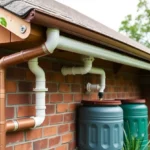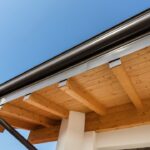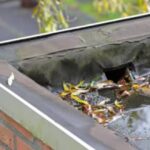When it comes to maintaining our homes, one pertinent question often arises: Can a roof be repaired instead of replaced? This is a significant concern for homeowners seeking cost-effective solutions and maintaining their homes structural integrity. Understanding whether a repair is feasible can save both time and money.
These days, roofing technology has evolved tremendously, offering more options than ever before for both repairs and replacements. The key lies in evaluating the condition of your roof and making an informed decision about whether to repair or replace it.

Understanding Your Roof’s Current Condition
Before making any decisions, it’s crucial to assess the current condition of your roof. Here are some steps to consider:
Visual Inspection
A simple visual inspection can often reveal a lot. Look for missing, cracked, or broken shingles. Check for signs of water damage or mold, as these indicate more serious underlying issues.
Professional Assessment
If you’re unsure, hiring a professional can provide a detailed assessment. Professionals can spot issues that the untrained eye might miss. It’s an investment that could prevent bigger problems later.
Common Issues That Require Roof Repair
Minor Leaks and Water Damage
Water leaks can often be swiftly repaired before they develop into major headaches. Repairs generally involve fixing small areas where the waterproofing has failed.
Damaged or Missing Shingles
Damaged or blown-away shingles can usually be replaced individually. This is typically far less invasive than replacing the entire roof.
When Is a Roof Replacement Necessary?
Age of the Roof
Roofs can last anywhere from 20 to 50 years depending on the material. If your roof is nearing the end of its lifespan, a complete replacement may be the most prudent choice.
Structural Damage
Severe structural damage, such as that caused by a storm or falling tree, often necessitates a full replacement.
Cost Considerations in Repair vs. Replacement
The cost is a significant factor when deciding whether to repair or replace a roof. Repairing a roof can be substantially cheaper and extends its life, but it could also be a recurring expense.
Environmental Considerations
Repairs often mean less waste from old materials. Consider the environmental impacts of your decision, as keeping an existing roof in good condition is often more eco-friendly than replacement.
Latest in Roofing Technology
The advancements in roofing technology mean that repairs can be more effective and last longer. Investigate how technology can aid in making your repairs last longer.
Modern Materials
Today’s roofing materials include highly durable options like EPDM and TPO, which can have tremendous effects on longevity and repair effectiveness.
Approved Techniques for Roof Repair
Staying informed about the methods used for roof repair processes is important. Techniques, such as roof coating and sealing, ensure your roof repairs meet the highest standards.
The Terrific Benefits of Timely Roof Maintenance
Preventative maintenance can avert bigger, costly repairs and replacements. Regular inspections and minor repairs can lead to terrific savings in the long run.
Comparing Roofing Materials
Understanding the different roofing materials allows for better decision-making. Check out this basic materials guide that can greatly influence whether you need a repair or replacement.

FAQs
How often should a roof be inspected?
Ideally, roofs should be inspected annually or after a major storm.
What are the signs that indicate a roof needs repair?
Signs include water stains on walls or ceilings, missing shingles, and visible wear and tear.
Can I undertake roof repair by myself?
While minor repairs can be DIY, it’s recommended to hire a professional for safety and efficiency.
This article contains affiliate links. We may earn a commission at no extra cost to you.








